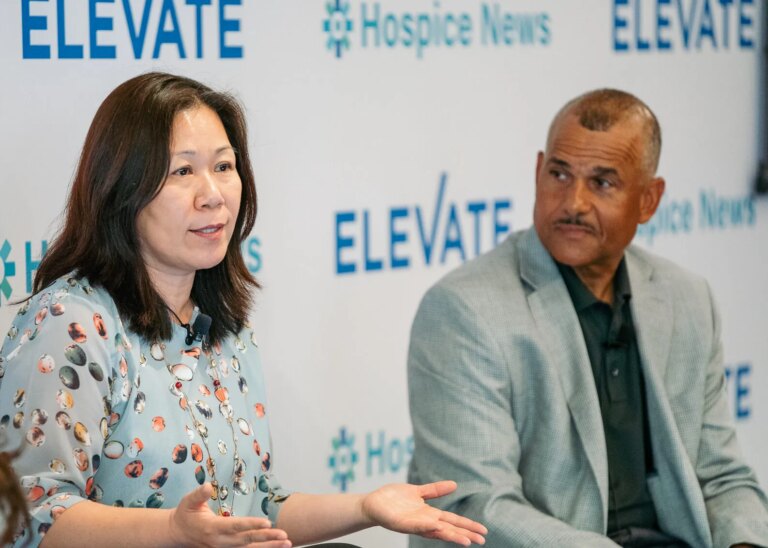Reducing health care disparities can come with complex operational and financial challenges for hospices as reimbursement pathways lag amid widespread workforce shortages.
Addressing these challenges can be difficult when looking to expand equitable access to care, says Teresa Lin, vice president of cultural market development at VNS Health. The provider offers hospice, home health, personal care and behavioral health services throughout the New York region, including four surrounding counties.
Improving health equity among underserved populations includes substantial investments in building community collaborations, increased staffing support and increased cultural education and outreach efforts, Lin said at the Hospice News Elevate conference in Washington, D.C.
“It takes a village to break down barriers,” Lin told Hospice News. “The majority of [patients’ we serve come from another country, or even if they have been here for decades they may have limited English proficiency. The way we get this information to them is really through their [community] We invite local elected officials, hospital partners, health providers and community organizations to really raise awareness about palliative care.
Investing in health equity
According to Lin, VNS Health hires a diverse workforce, which has helped the provider improve understanding of its palliative care services among a broader patient population.
While cultural and language barriers create access issues and misunderstandings around palliative care, these efforts helped VNS Health expand a community education program among Chinese communities in its service region, which it then expanded to senior centers, local hospices and cancer center support groups in other areas, she said.
“We intentionally hire bilingual and bicultural professionals, which is essential for effective communication,” Lin said. “This impacts the quality of care because information can get lost in translation. We need to make sure that documents are also translated into their language.”
Financial and operational resources are needed to increase health equity efforts in hospices, said David Turner, vice president of special projects and initiatives at St. Croix Hospice, which serves 10 Midwestern states. Turner is also CEO and partner of Nashville-based Heart’n Soul Hospice.
Improving access and utilization of care comes at a significant cost to hospices during tough economic times, Turner said. Staffing pressures have sparked fierce competition for clinical resources, while reimbursement rates have not kept pace with rising costs of providing care.
“The margins aren’t what they used to be, but there are certain things you should do because it’s the right thing to do,” Turner told Hospice News at the conference. “It starts with saying, ‘This is important to the community…let’s make sure it’s supported.’ Beyond that, you have to be creative. There are tools that allow you to reach certain areas. We hope more people will want to be part of this conversation.” [to be] shepherds who go into the community, ready to do the necessary work.
Diversity Return on Investment
According to Turner, broader inclusion efforts often require more extensive interdisciplinary staff training and diverse hiring practices, as well as developing strong community collaborations. These are just some of the first steps on a long journey toward equitable palliative care, he said.
Hospices that don’t invest in diversity and inclusion risk losing a large majority of their underserved patients with growing end-of-life care needs, Turner said. Ultimately, the return on investment for resources spent on health equity is improved quality of care and reduced health care costs among a growing aging population, he said.
According to the National Hospice and Palliative Care Organization, Caucasians consistently make up 80% of Medicare decedents receiving hospice benefits, with minority populations making up the remaining 20%.
The data highlights a large, untapped market of patients and families who need stronger support and deserve the investment of hospice health equity funds, Turner said. Populations of color are one of many underserved populations in need of expanded hospice reach, including LGBTQ+ communities and patients in rural and economically disadvantaged areas, he said.
“Hospice services are still predominantly used by white, middle-class people,” Turner said. “There’s still a lot of work to be done. When I think about who’s underserved … most of the time it’s related to their socioeconomic status. If you have money, you’re going to have access to these services. We haven’t done a good enough job in all aspects of health care — not just hospice — of making sure that everyone has at least the opportunity to learn about the services that are available to them.”



